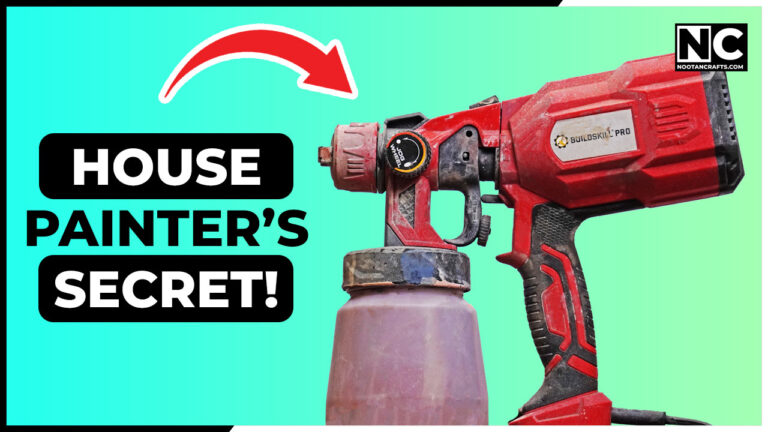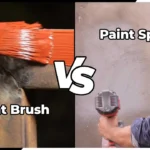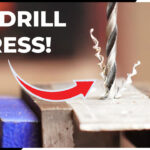In this article, we will learn how to use a high volume low pressure spray gun properly step-by-step. As you know, painting can be a fun and rewarding DIY project, but it can also be messy, time-consuming, and expensive if you don’t have the right tools and techniques.
That’s why using an HVLP paint sprayer gun can make your life easier and provide you with better results. An HVLP paint sprayer gun is a device that atomizes paint and sprays it onto a surface with a controlled pattern and pressure. It can help you cover large areas faster, achieve an even finish, and reduce paint waste and overspray.
So, what are we waiting for? Let’s do this!
How to Use a High Volume Low Pressure Spray Gun – Video
You can also watch my YouTube video on how to use an HVLP spray gun. I have used an electric HVLP gun in this tutorial; the steps would be slightly different if you’re using an air-powered one.
Understanding A HVLP Spray Gun
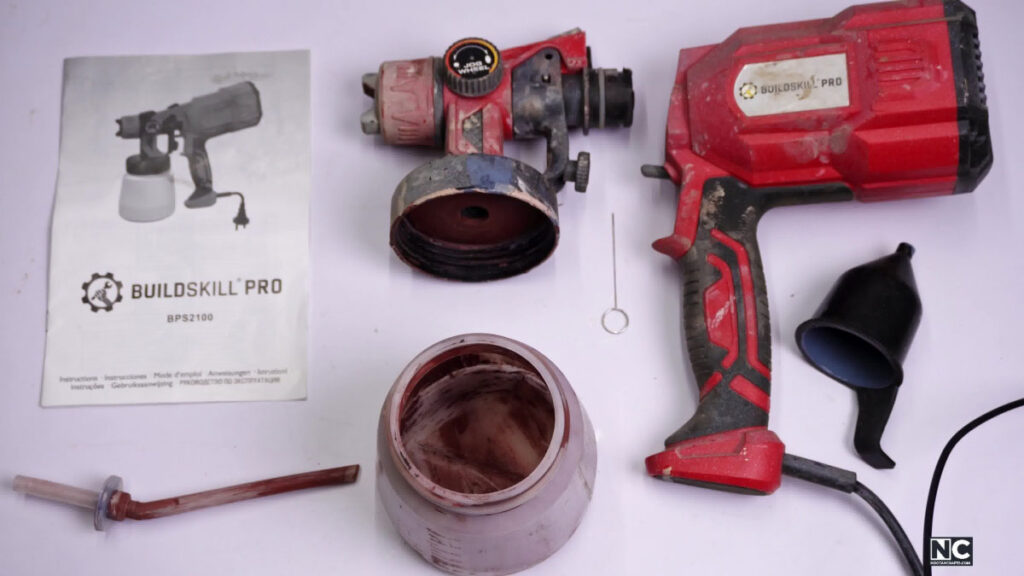
Before diving into the painting process, familiarize yourself with the different components of your paint sprayer.
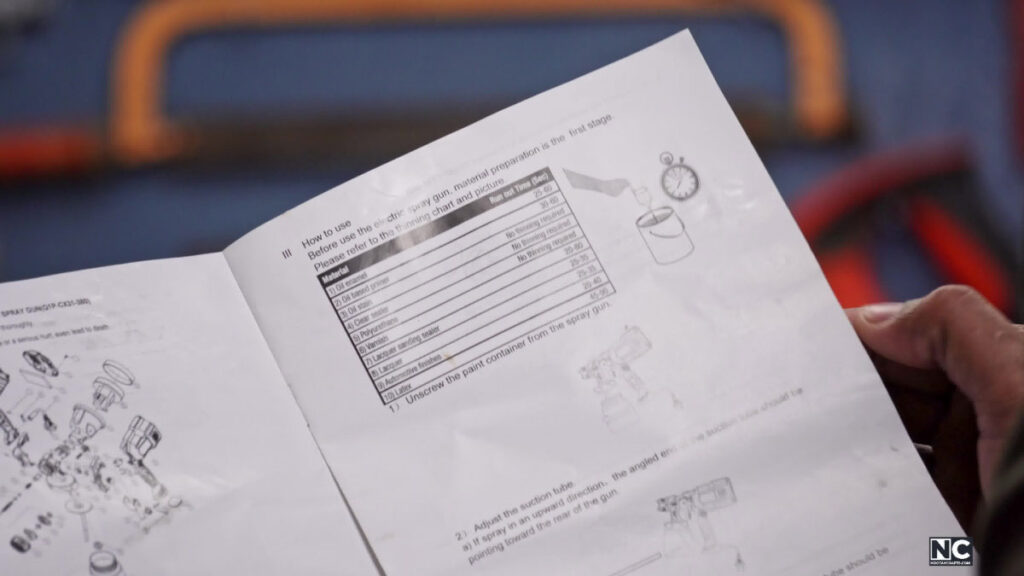
The manufacturer’s user manual is an invaluable resource for identifying parts and understanding their functions. Take the time to read through the manual to ensure an effective painting experience.
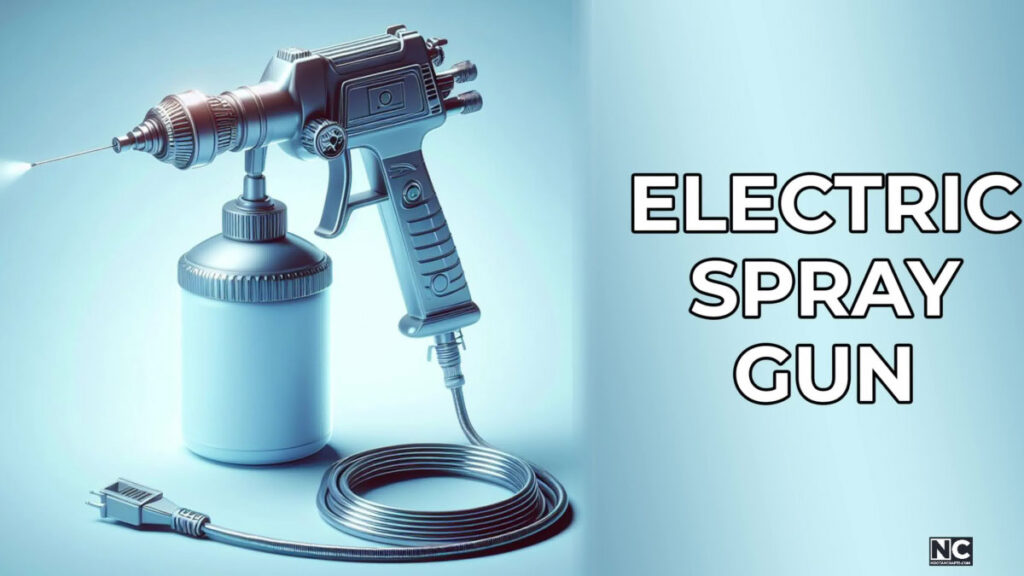
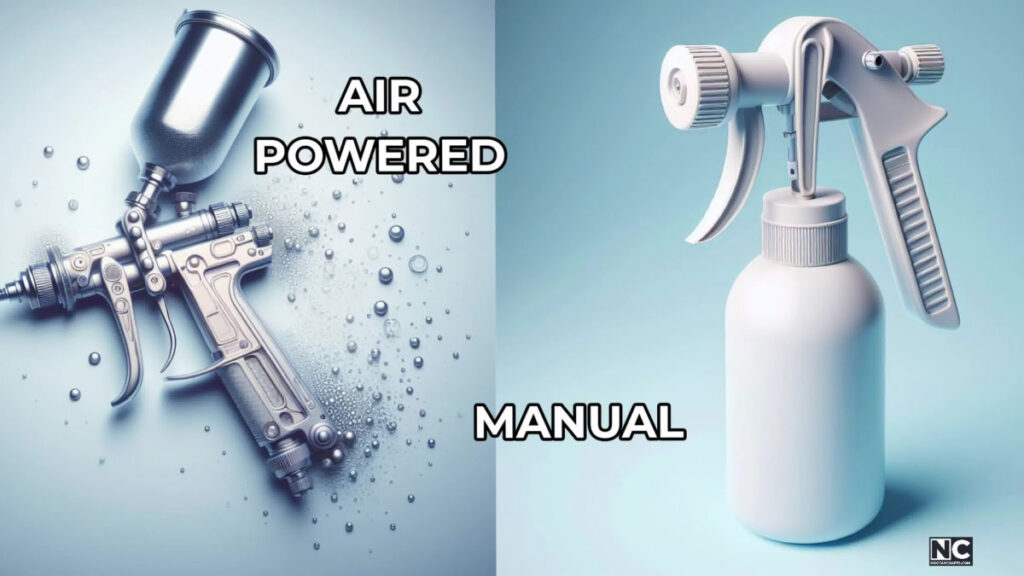
How Does an HVLP Spray Gun Work?
There are different types of electric gun sprayers available, but they all work on atomization, which can be explained using Bernoullie’s principle.
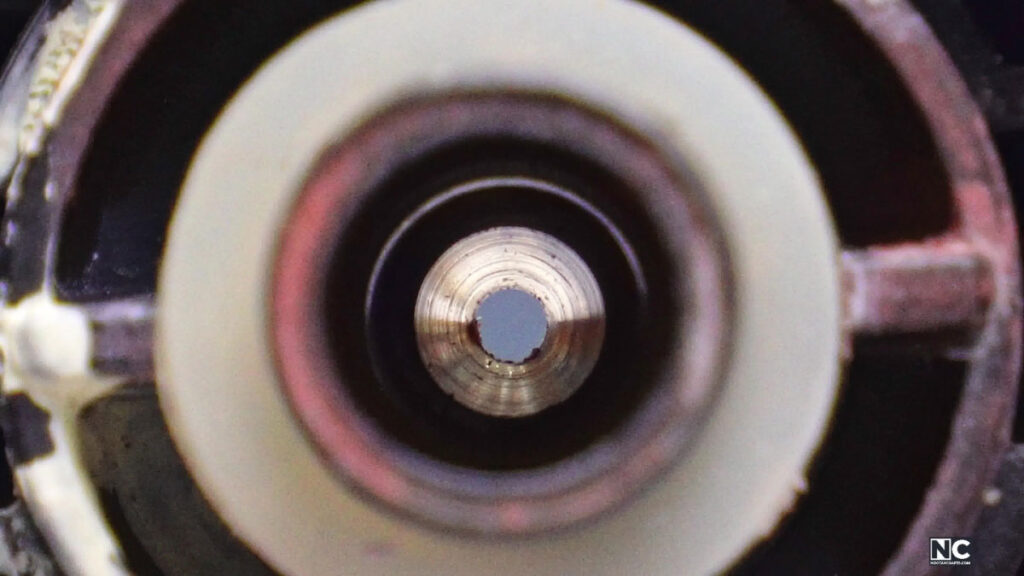
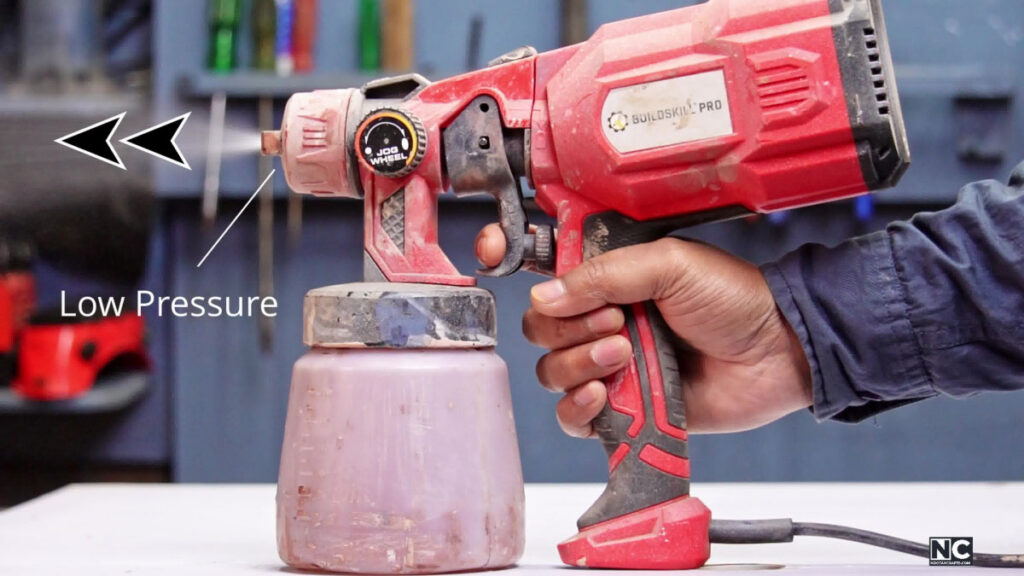
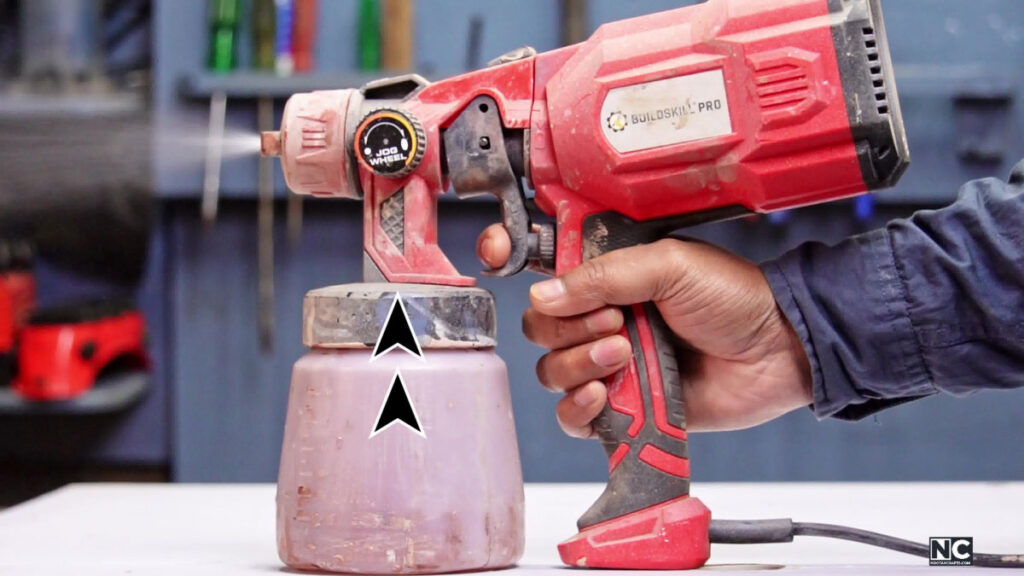
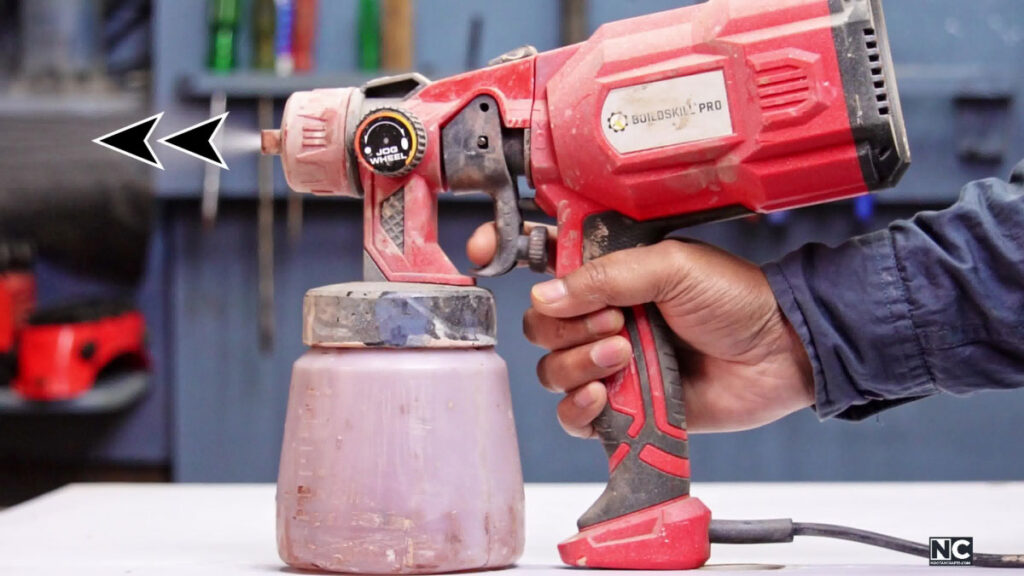
When you push the trigger of your HVLP spray gun, air passes through the small nozzle. Due to the small opening, the velocity of the air increases when it escapes, which is why the pressure decreases near the nozzle.
Due to the pressure difference, the liquid in the bottle rises and blows out as a spray with the pressure. That’s why they are called high-volume, low-pressure spray (HVLP) guns.
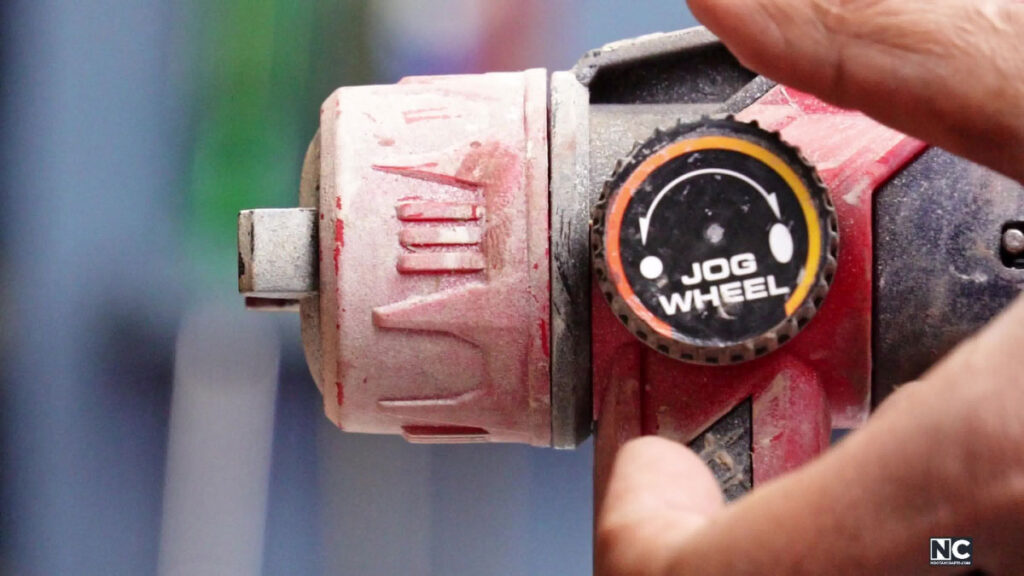
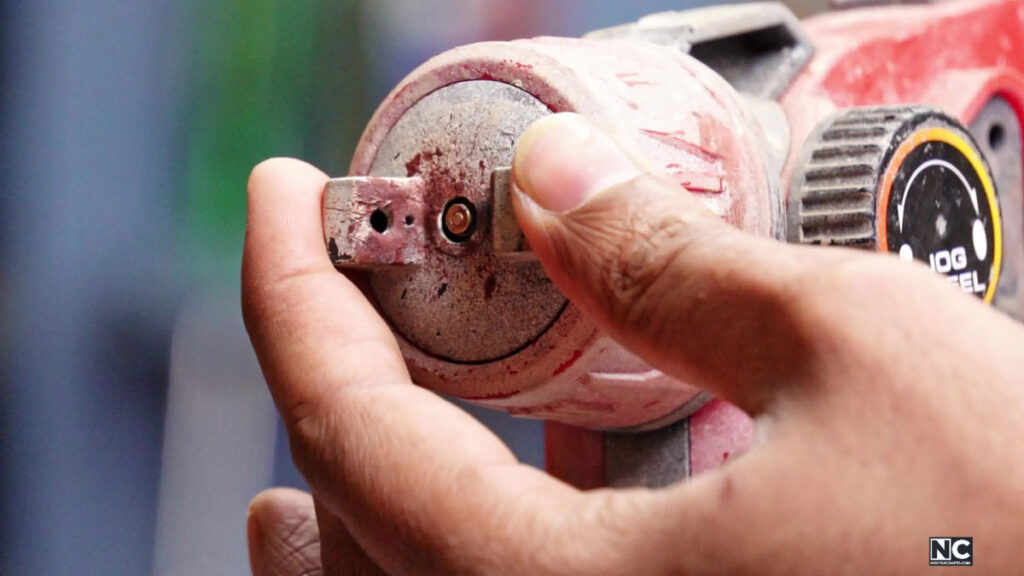
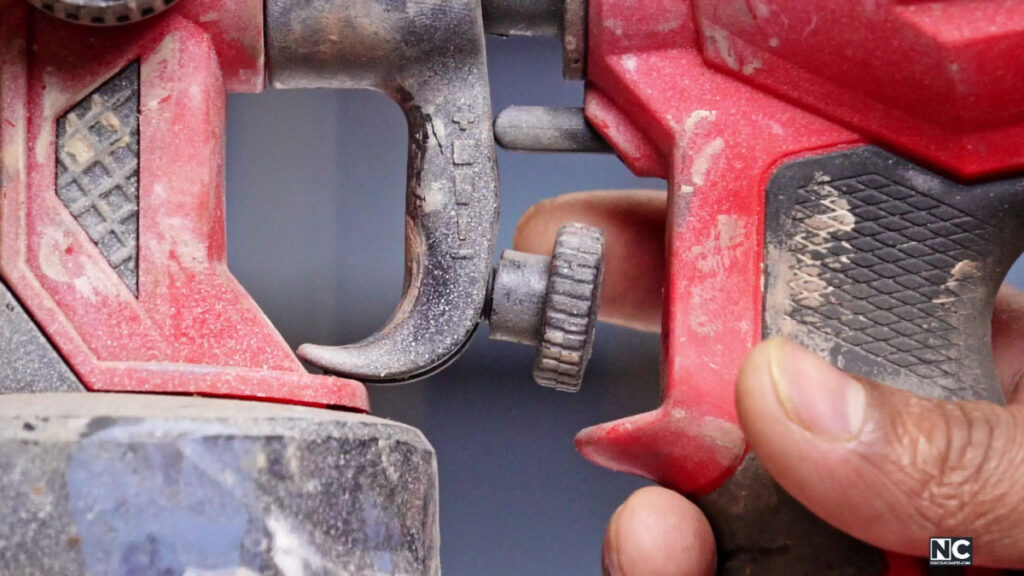
Apart from the fundamentals, most guns offer adjustable spray shapes. You can adjust it as a circle, horizontal, or vertical ellipse. You can also adjust the pressure of the gun, which affects the flow rate. This means you can increase or decrease the volume of paint that comes out of the nozzle.
How to Use an HVLP Spray Gun – Step-by-Step Guide
Here is the step-by-step guide on using an HVLP (high volume, low pressure) spray gun. Remember, I am not an expert, and there might be several other methods; I shared what I learned, and it worked for me. So, here we go.
Prepare your paint
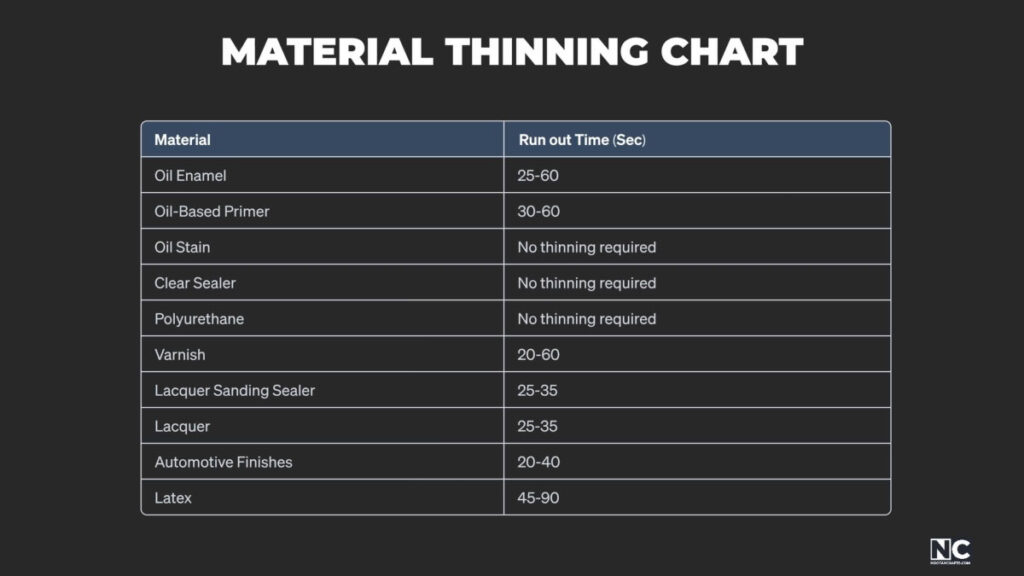

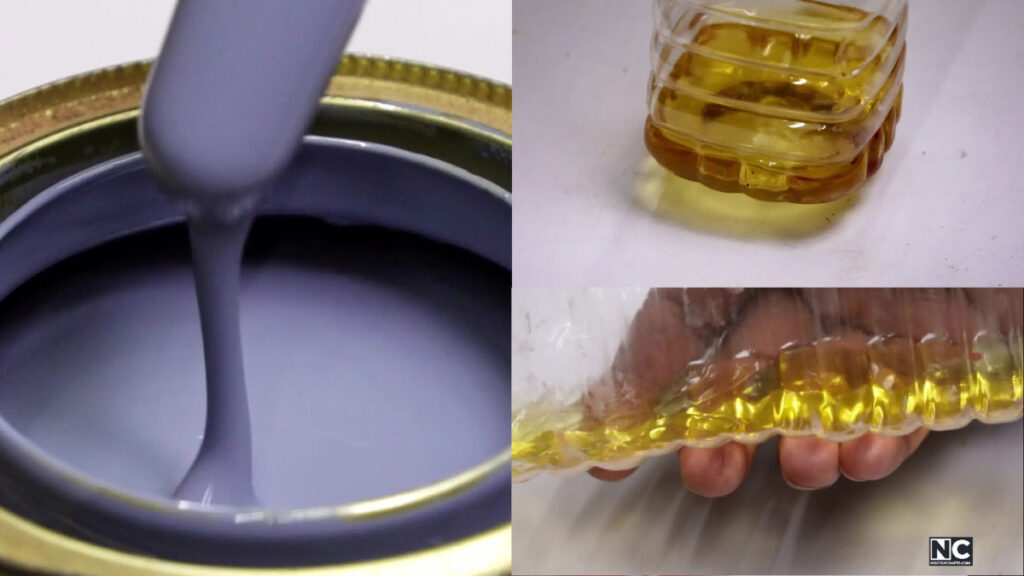
Every spray gun is different, so you must read the paint sprayer manual for recommendations on the type and viscosity of paint. Some materials, such as polyurethane and clear sealer, don’t require thinning because they can easily flow through the nozzle.
On the other hand, some thick materials, such as Varnish, oil enamel, or automotive finishes, may require thinning.
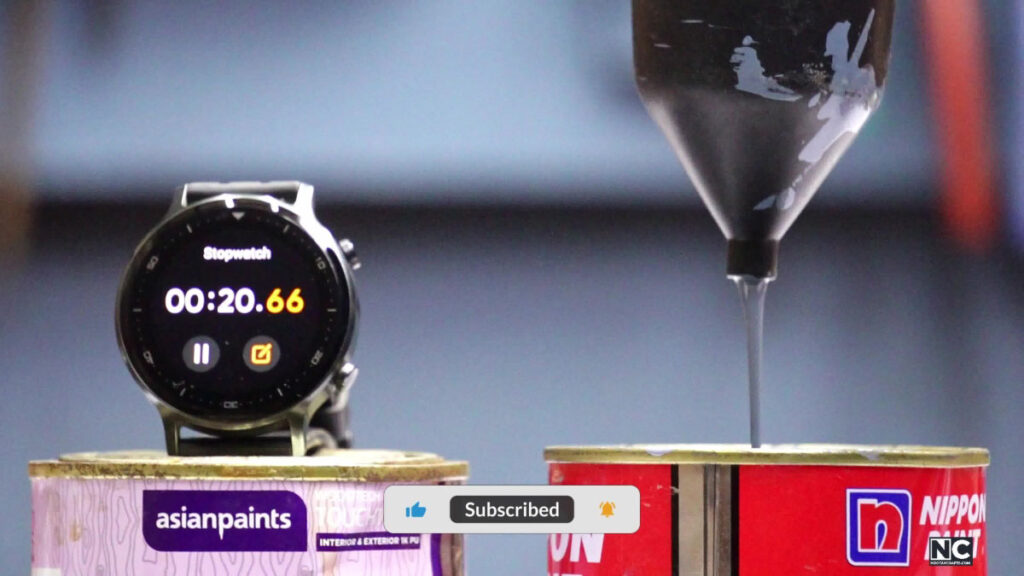
HVLP spray guns usually come with a funnel to check the recommended viscosity of the material. Run the liquid and measure the timer; it must be within the range of the provided value. Now, move to the next step.
Prepare the machine
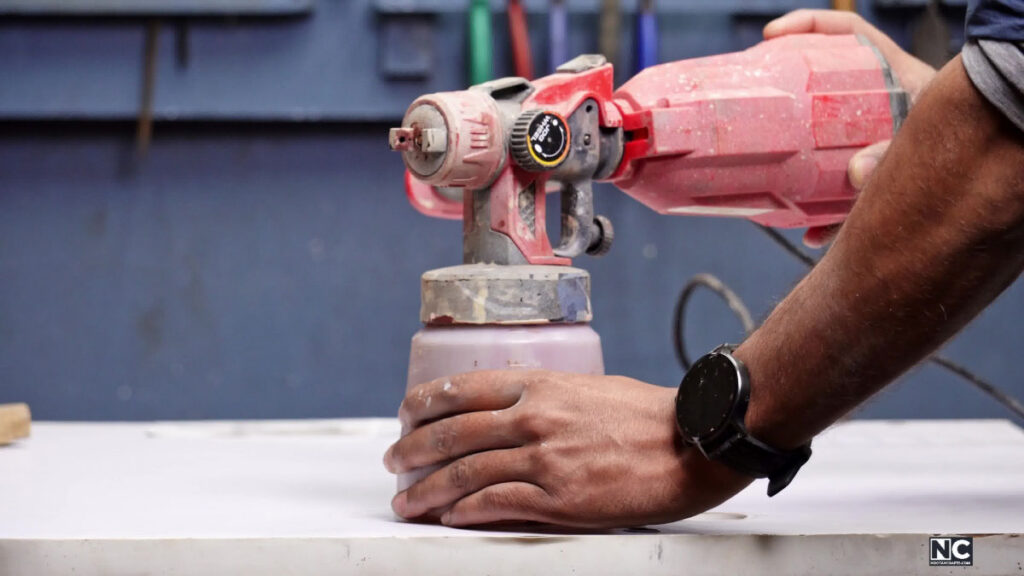
Unscrew the Paint Container
First, remove the motor from the gun body because it makes the process easier when screwing the filled container back into the gun body, especially if the machine is heavy.
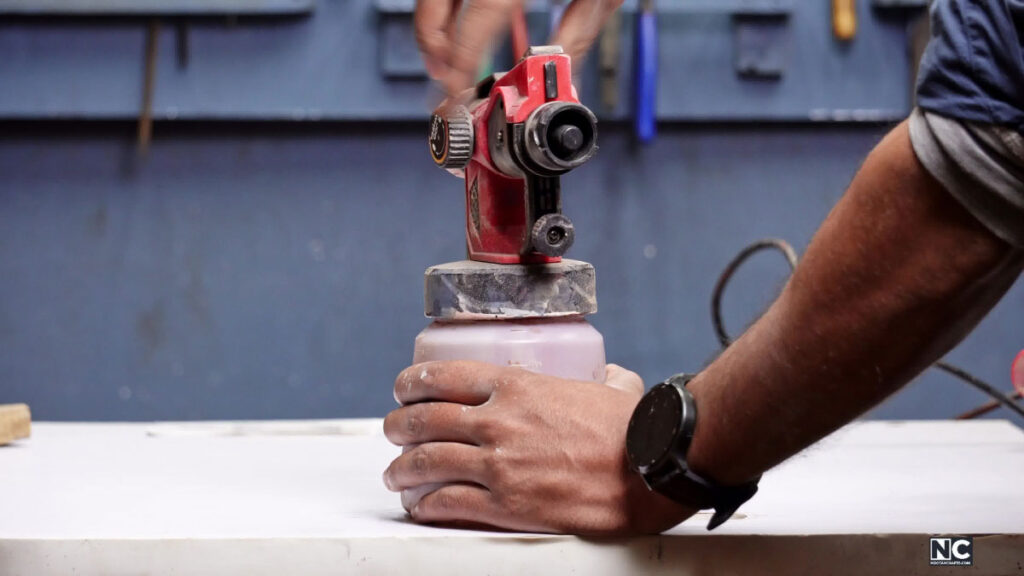
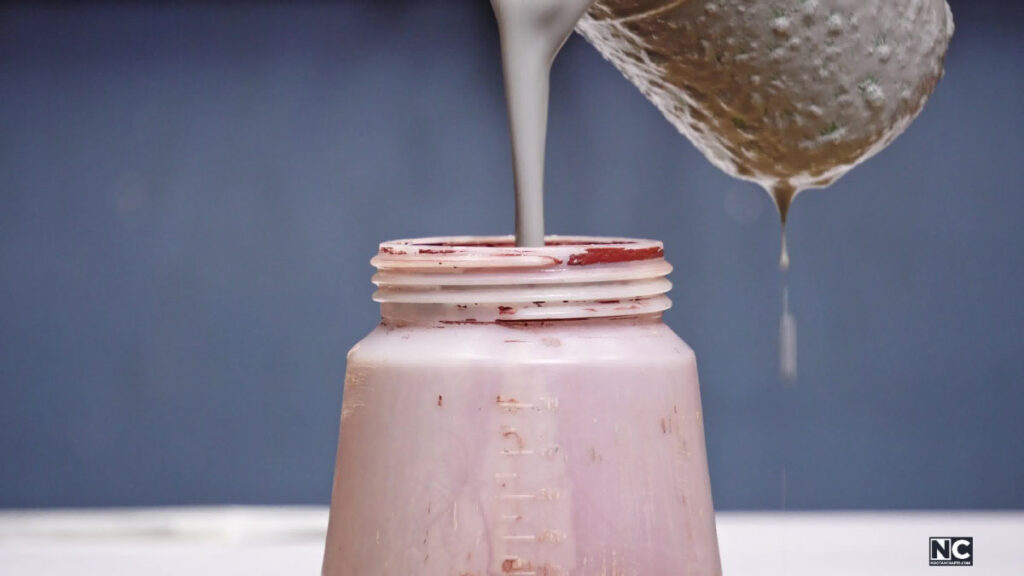
Now, unscrew the paint container from the spray gun and set the gun aside. Pour the prepared material into the container, making sure it doesn’t exceed the mentioned limit. My machine supports an 800ml liquid at one go.
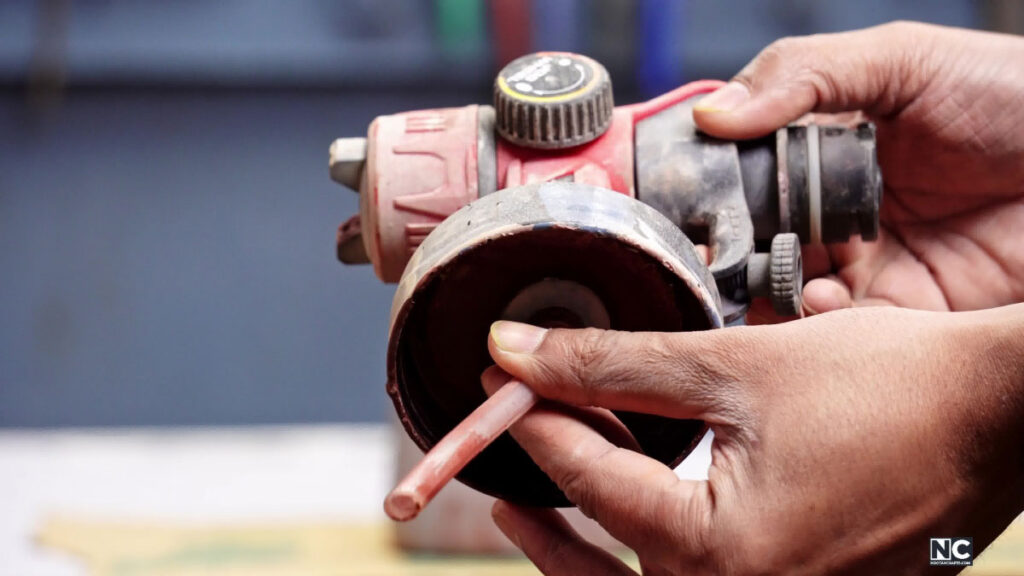
Pour the Liquid and Set the Suction Tube Direction
After pouring the liquid into the container, set the angle of the suction tube, which is a crucial step. If you’re spraying upward, the angled end of the suction tube should point toward the rear of the gun. In contrast, if you’re spraying downward, the angled end of the suction tube should point toward the front of the gun.
The reason is simple: the end of the suction tube must always be submerged in the liquid so the painting process doesn’t interrupt.
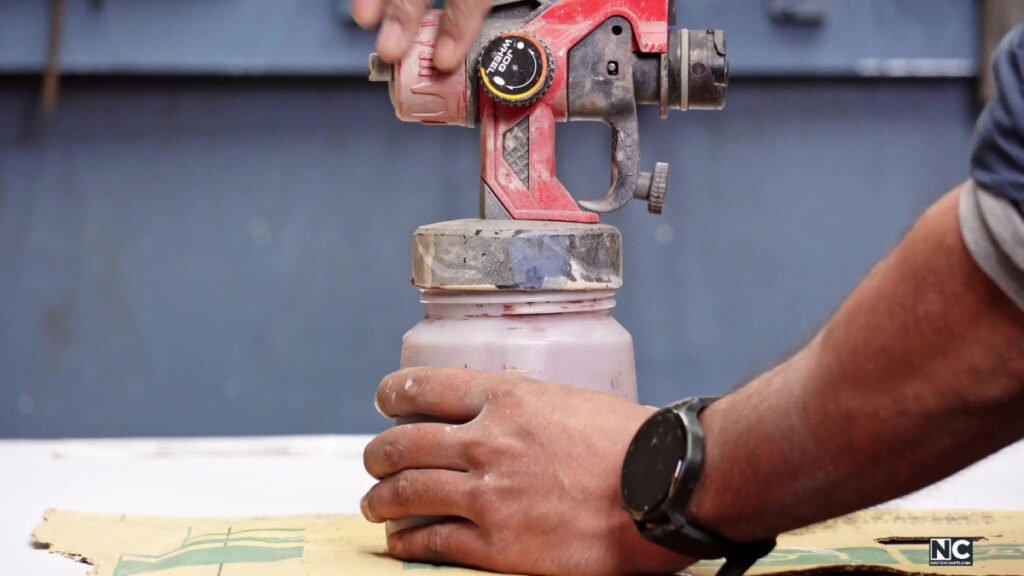
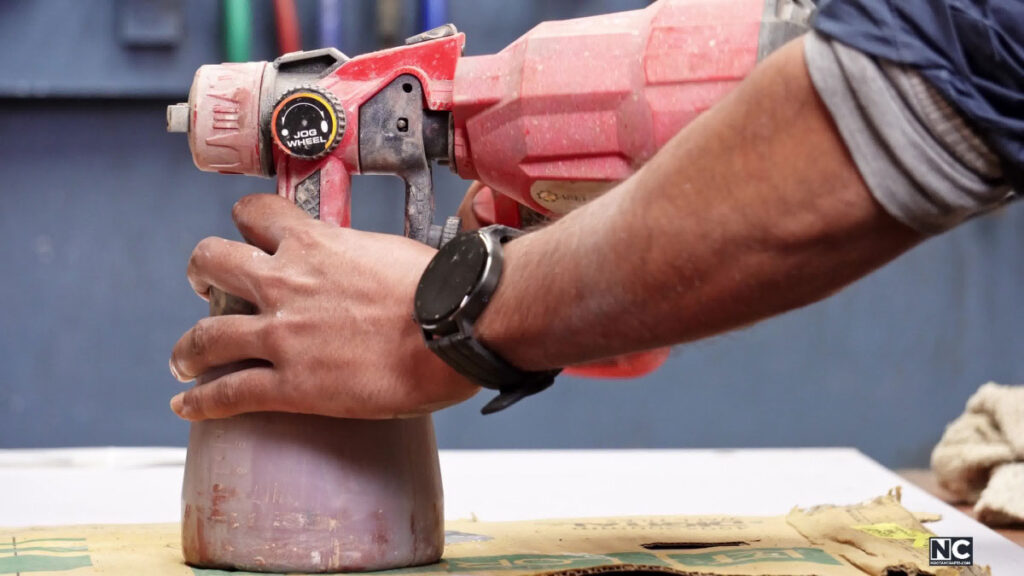
Close the Container and Attach the Gun Body
Screw back the filled container by twisting the gun body. I find this way the most efficient rather than lifting the container in the hand and screwing it into the gun body.
To connect the gun body with the motor, hold the gun with your hand, align the slot on the gun, and insert it. Now rotate the motor part clockwise 90 degrees while holding the gun body, and you’ll hear a clicking sound.
When both the gun body and motor are parallel to each other, they get locked.
Now, you have to make some adjustments according to project requirements.
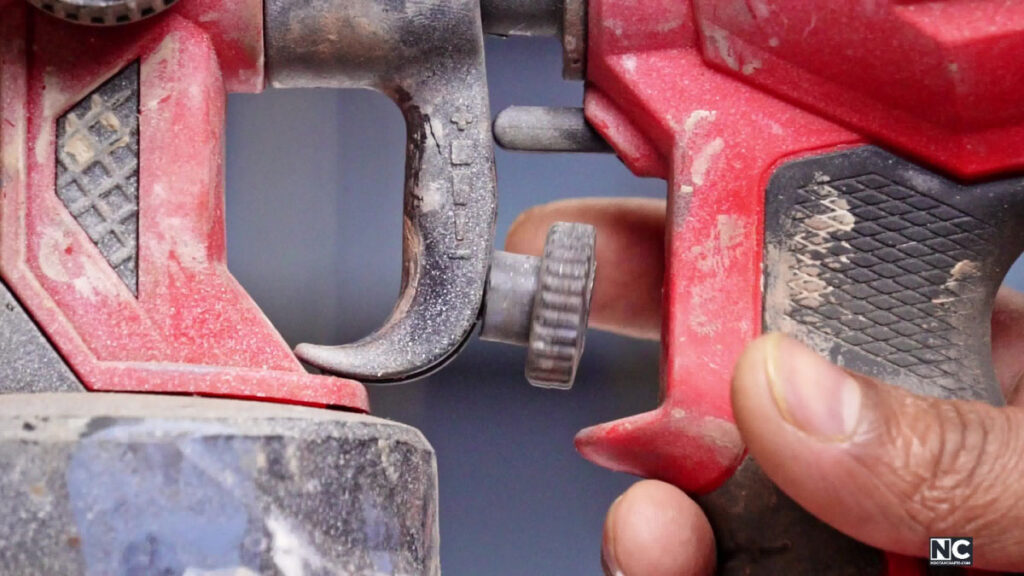
Set the Paint Flow Rate and Direction
First, you have to set the paint volume with the help of the screw provided on the gun body. The idea behind this screw is simple; it changes the length between the trigger and the power button. So if you tighten that screw, it allows pressing the button more deeply, resulting in the gun throwing more air and vice versa.
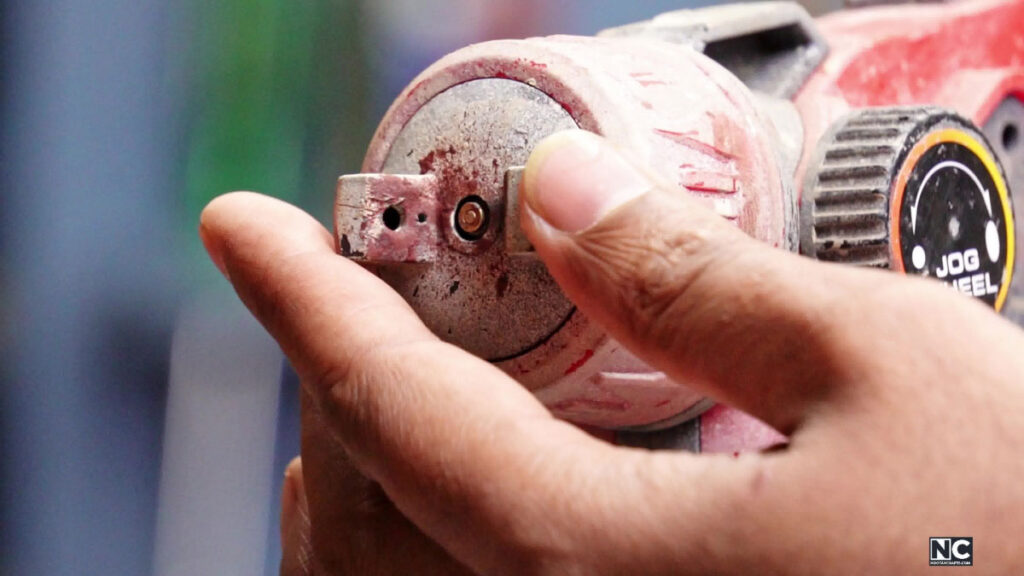
Now, you can set the spray pattern according to your needs. For example, if you’re painting on a verticle area, then you might need to set the pattern horizontally. Similarly, the pattern needs to be adjusted vertically for a horizontal area. If you’re working in a narrow area, the circle pattern would be the best to avoid wastage.
Start Painting With Your HVLP Spray Gun
Test on a Waste Area
Now everything is set; it’s time for painting. Before working on your final project, spray some test paint on a waste area. This will give you an idea of the spray pattern and volume.
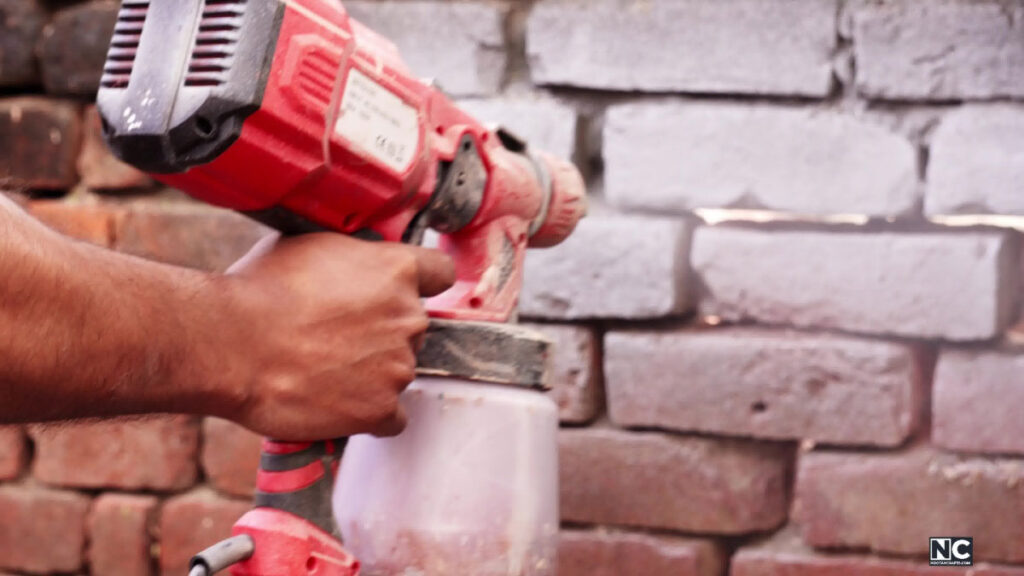
Point the Gun
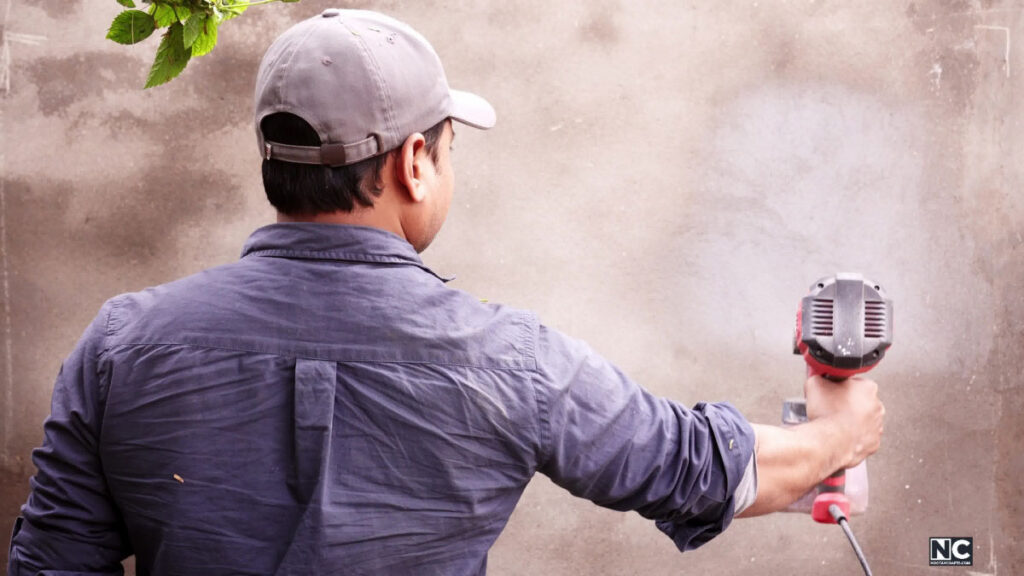
Point the gun toward the target surface and start the painting by pressing the trigger while moving it left to right or right to left, as you please.

Take it Slow
Keep your gun approximately a foot away from the surface. Moreover, keep your strokes at an even speed for a smooth finish.
This step is crucial to ensuring an even tone throughout your whole project. However, it may require practice. I also struggled in the beginning.
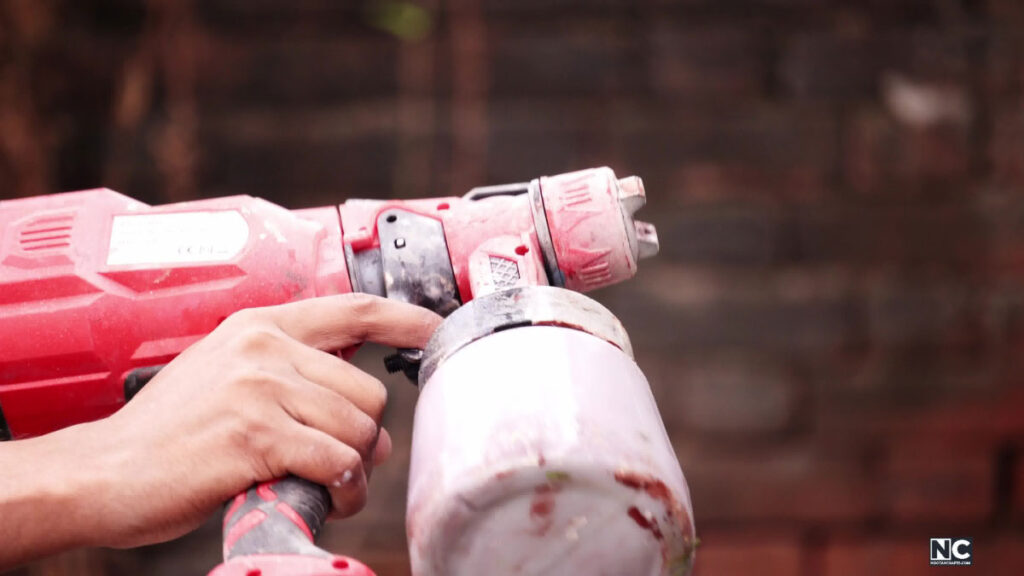
Most importantly, don’t flex or rotate your wrist because it will cause uneven paint flow, which can ruin your project. The idea is simple: try stabilizing the container fluid; don’t give a sudden jerk or shake too much while painting.
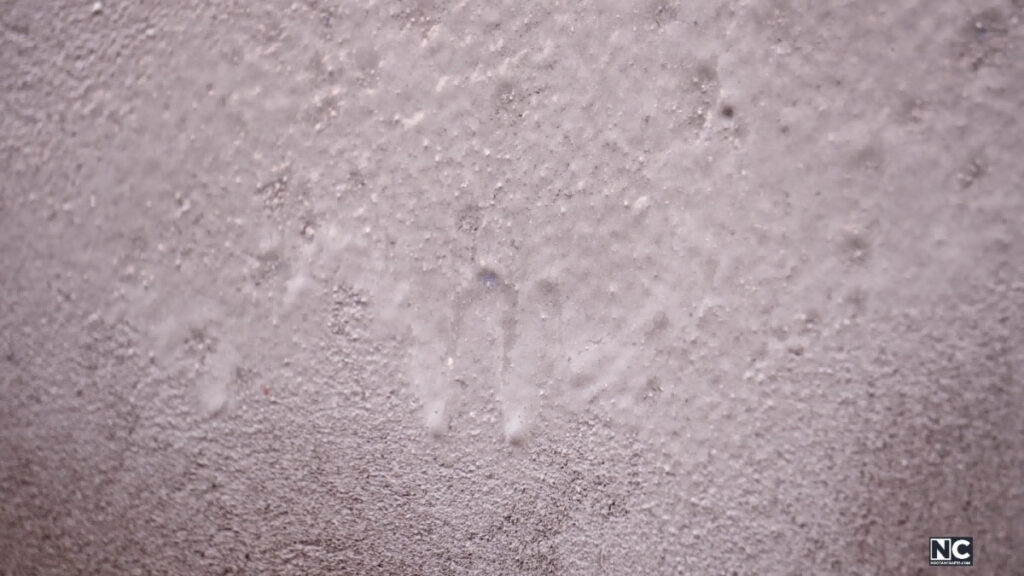
Also, don’t try to paint in one go. If you do, you might face dripping issues due to excess material, which doesn’t look good. Painting multiple coats will provide a much smoother finish.
How to Use an HVLP Paint Sprayer – Conclusion
Using an HVLP spray paint gun is undoubtedly tricky and could be messy initially. However, if you follow the user manual patiently, you can achieve a professional finish.
I have done several projects with my electric HVLP paint sprayer gun and am still learning to play with flow rate, viscosity, direction, and pattern according to the project requirements.
Once you use an HVLP spray gun, you will have difficulty switching to traditional brush methods. It makes painting so straightforward and efficient that you’ll love it.
If you’ve survived this far, I assume you liked the video and article. I would appreciate it if you subscribed to my YouTube channel.
If you have any questions or feedback, drop a comment below. You won’t believe I respond to every damn comment despite getting a whopping number of 1-2 comments 😆 on my videos and article. Thank you very much for watching and reading; I will see you next time. Till then, keep crafting!

